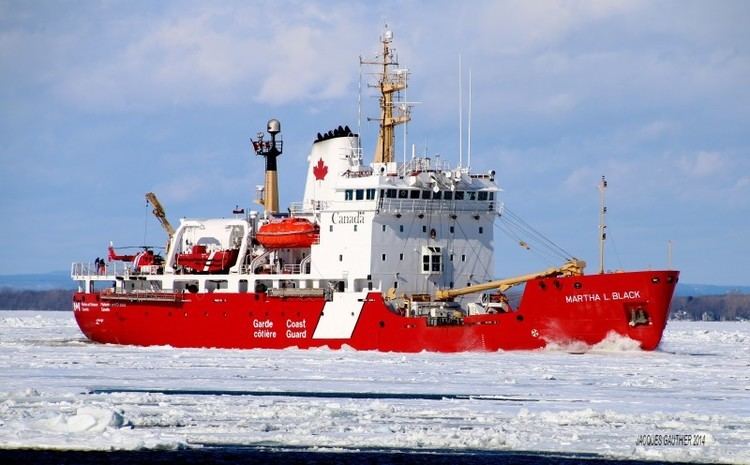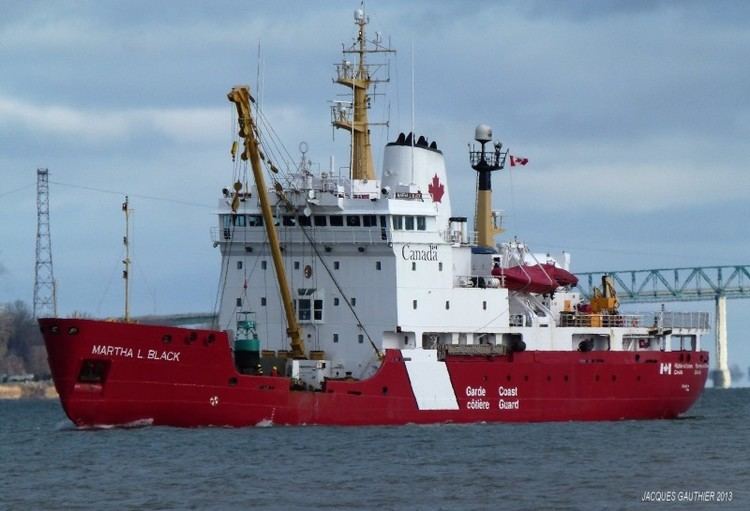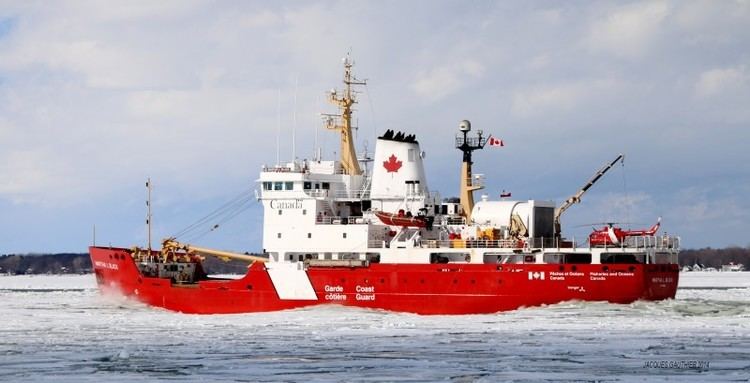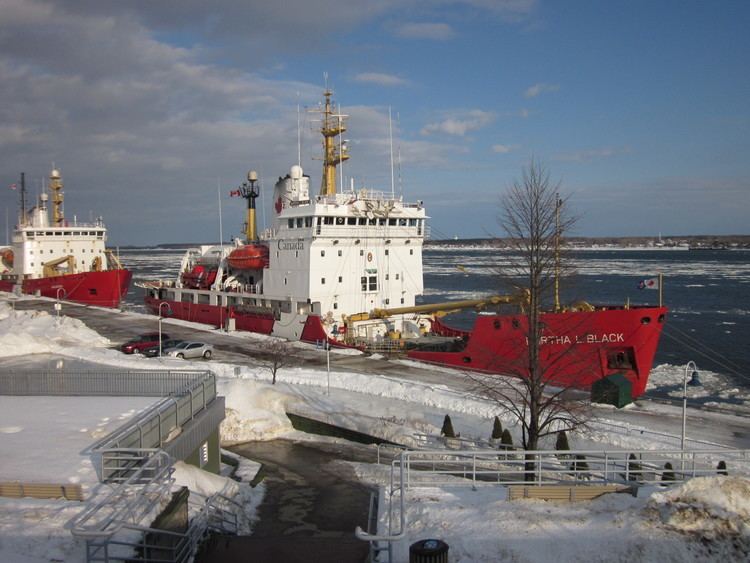Yard number 108 Launched 6 September 1985 Draft 6.1 m Builder Burrard Dry Dock | Commissioned 30 April 1986 Length 83 m Endurance 3.9 months | |
 | ||
Ccgs martha l black on welland canal
CCGS Martha L. Black is the lead ship of her class of light icebreakers of the Canadian Coast Guard. The ship was built in 1986 in Vancouver, British Columbia by Versatile Pacific Shipyards Limited. Part of the CG Program Vessels and was the vessel was mainly designed as a high-endurance and multi-tasked boat and most of her duties are along the St. Lawrence River and able to the handle ice thickness in the Saint Lawrence Seaway.
Contents

Design and description

Martha L. Black, the lead ship of her class of icebreakers, displaces 4,662 long tons (4,737 t) fully loaded with a gross tonnage (GT) of 3,818.1 and a net tonnage (NT) of 1,529.4. The ship is 83.0 metres (272 ft 4 in) long overall with a beam of 16.2 metres (53 ft 2 in) and a draught of 5.8 metres (19 ft 0 in).

The vessel is powered by is propelled by two fixed pitch propellers and bow thrusters powered by three Alco 251F diesel-electric engines creating 8,847 horsepower (6,597 kW) and three Canadian GE generators producing 6 megawatts of AC power driving two Canadian GE motors creating 7,040 horsepower (5,250 kW). The ship is also equipped with one Caterpillar 3306 emergency generator. This gives the ship a maximum speed of 15.1 knots (28.0 km/h). Capable of carrying 1,086 long tons (1,103 t) of diesel fuel, Martha L. Black has a maximum range of 14,500 nautical miles (26,900 km) at a cruising speed of 14 knots (26 km/h) and can stay at sea for up to 120 days. The ship is certified as Arctic Class 2.

The icebreaker is equipped with one Racal Decca Bridgemaster navigational radar operating on the I band. Martha L. Black has a speedcrane capable of lifting 20 long tons (20 t). The ship carries two rigid-hulled inflatable boats and a self-propelled barge. Martha L. Black is equipped with a 195 m2 (2,100 sq ft) flight deck and a 103 m2 (1,110 sq ft) hangar that can house two light helicopters of the MBB Bo 105 or Bell 206L types. The ship can carry 22.8 m3 (810 cu ft) of aviation fuel for the helicopters. However, the vessel is only allotted one helicopter. The ship has a complement of 25, with 10 officers and 15 crew. Martha L. Black has 26 additional berths.
Service history

Constructed by Versatile Pacific Shipyards Limited at their yard in North Vancouver, British Columbia with the yard number 108, the vessel was launched on 6 September 1985. The ship entered service on 30 April 1986. The ship was named for Martha L. Black, a woman from Chicago, Illinois who immigrated to Canada and was a pioneering settler of Yukon. She became the second woman ever to be elected a Member of Parliament in Canada in 1935. The ship is registered in Ottawa, Ontario, and homeported at Quebec City. The vessel was initially assigned to the Western Region, but swapped places with sister ship CCGS Sir Wilfrid Laurier.

The ship's primary duty is a buoy tender and navigational aids support in the Saint Lawrence River and Seaway and Saguenay River. Martha L. Black also provides icebreaking services to the same areas. In 2012, the ship transported scientists on a research mission to the Labrador Sea. In January 2014, Martha L. Black was one of two icebreakers called into the Saint Lawrence River to aid two passenger ferries which were prevented from crossing the river by ice. The ferries, which connect the Quebec communities of Sorel-Tracy and Saint-Ignace-de-Loyola, had been docked after ice conditions had become severe enough that the large icebreaker CCGS Amundsen needed reinforcement.
